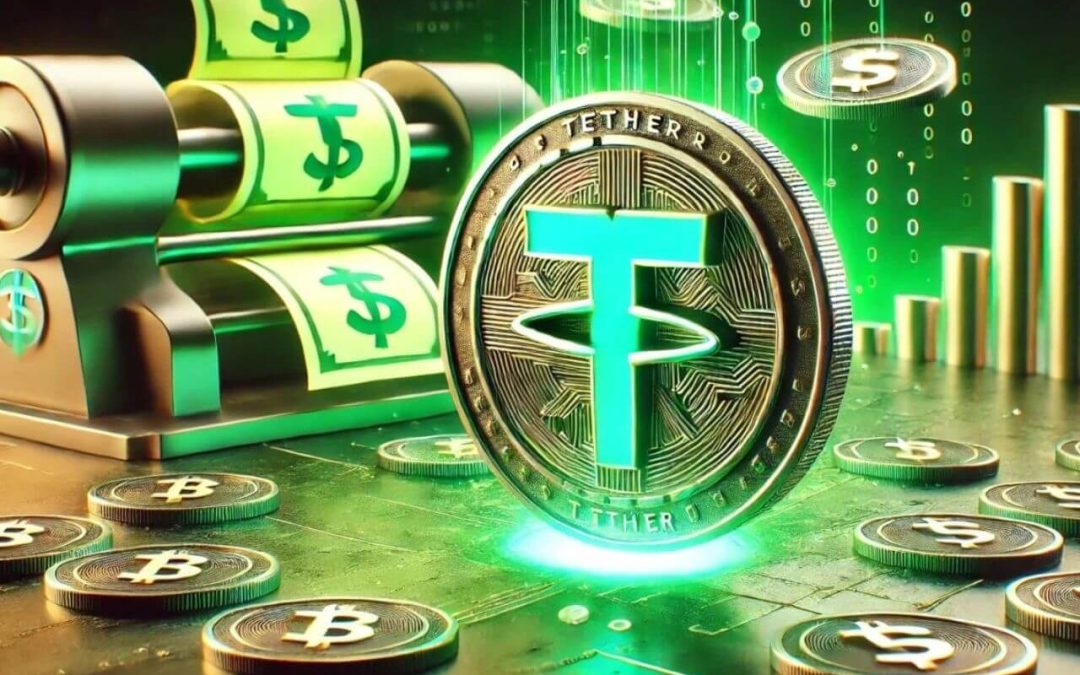Among stablecoin investments, one of the most asked questions is about the safety of USDT. For both an individual and institutional investor, this question cuts to the core because the security of USDT significantly affects its usability and reliability. To answer the question of whether it is safe to hold USDT, we have to examine this topic thoroughly.
What is USDT?
Launched in 2014 by Tether Limited, USDT has a commanding 70% market share of the stablecoin market globally in 2024. Backed with $92.2 billion cash equivalents and U.S. Treasury Bills, its reserves grant it a peg of 1:1 with the U.S. dollar on 15 blockchains.
Herein, USDT plays a key role in cryptocurrency trading for:
- Market dominance. 65% of all crypto spot trading pairs involve USDT.
- Trading activity. Processes 3.5x more volume than USDC, its closest competitor.
- Transaction speed. Averages 45 seconds on Tron and 6 minutes on Ethereum.
- Cross-chain integration. Supports $42 billion of monthly volume through cross-chain bridges.
This strong infrastructure indicates the market-leading position of USDT. Still, its long-term safety depends on its regulatory compliance and transparency regarding its reserves.
Is USDT a Good Investment?
For those looking to escape the volatility facing the cryptocurrency market, USDT is an investment that looks quite strategic. Being a stablecoin, USDT has a store of value in securing an investment, especially in preventing capital loss during market downturns. Always evaluate your risk tolerance and do thorough research before investing.
For traders and investors, USDT presents an important tool since it is stable and liquid. Settlements are made rapidly between different exchanges without greater exposure to volatility. However, all this said, some very valid concerns about the reserves of Tether and regulatory scrutiny may question its long-term viability.
To counter these risks, you can turn to
Molecula. It offers safe deposits for USDT (TRC20, ERC20) holders and transforms idle stablecoins into steady returns. You can earn up to 10% APY on your USDT with Molecula. The platform stands out by allocating funds only to reliable and proven DeFi tools and Real World Assets. There are no traditional lock-up concerns.
How safe is holding USDT?
Holding USDT is relatively risk-free compared to other cryptocurrencies, as its value tends to be consistent. However, its secure keeping depends largely on good habits in storing USDT. The employment of secure wallets and trusted exchanges with strong security protocols will also diminish the chances of theft and hacking incidents.
Update on Regulatory Landscape
As of January 2025, the regulatory environment around USDT has dramatically shifted. Tether has announced the discontinuation of its euro-backed stablecoin, EURT, by November 25, 2025, citing challenges posed by the EU’s Markets in Crypto-Assets (MiCA) regulation. MiCA institutes more rigorous monitoring of the companies behind such stablecoins, demanding greater compliance.
Key regulatory updates:
- MiCA framework. Tighter KYC/AML standards for stablecoin operations.
- Hong Kong. The Monetary Authority included USDT in its stablecoin framework pilot.
- UAE. Tether received provisional approval from VARA.
- Brazil. The central bank recognized USDT as a monitored form of payment.
What Tether is doing to respond to these challenges:
- MiCA-compliant stablecoins – EURQ and USDQ – are supported via the Hadron platform.
- Enhanced compliance policies throughout all operations.
- Concentrating on markets that have more transparent regulatory requirements.
- Despite the regulatory challenges, USDT continues to see intense trading activity, with its 24-hour volume reaching $83.7 billion.
Not all experts share the same opinion regarding the safety and leading market position of USDT. According to Ruslan Lienkha, head of markets at YouHodler: “
USDT is an offshore stablecoin with a lack of transparency and regulation, while USDC is closely watched by U.S. authorities”.
Final Thoughts
USDT is the central part of the cryptocurrency ecosystem, enabling $83.7 billion in daily transactions and acting as a digital dollar equivalent globally. One can think of USDT as a busy international airport that efficiently manages massive traffic with evolving safety protocols in place – regulations, so to speak.
Financial journalist Chayanika Deka: “
Despite holding onto the top spot, Tether is gradually losing its market share due to increasing competition from regulated alternatives like USDC”. This reflects a change in user preference toward stablecoins with more regulatory compliance.
With recent developments such as the implementation of MiCA and the phasing out of EURT by Tether, the future of the stablecoin market is beginning to take shape. It’s important to stay up to speed with these developments so that you understand how USDT will transition from a crypto cornerstone into a regulated financial asset.

